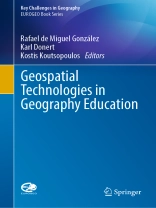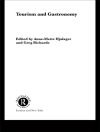This book addresses new pedagogies focusing on the use of geospatial technologies and geomedia in the classroom. Today, geospatial technologies are substantially influencing geography teaching and learning, particularly in secondary education. Web-GIS, virtual globes, storytelling, maps and apps for mobile devices are transforming the nature and design of geography curricula, instructional processes, didactics, resources and assessments. Undoubtedly, geography is among those school subjects that have benefited most from the implementation of new technologies in the classroom. Geospatial technologies can be used to develop inquiry-based learning or project-based learning pedagogies and help students to acquire spatial reasoning and spatial citizenship skills in the context of education for sustainable development.
This book highlights a range of initiatives, projects and educational practices – from several European countries and settings – related to geospatial challenges in geography education. Given its scope, it will be equally appealing to scientists, students and teachers of geography and other fields using geospatial technologies and geomedia.
Содержание
Introduction.- Chapter 1 Infusing Educational Practice with Three Implementations of Web GIS.- Chapter 2 Implementing geospatial thinking in education.- Chapter 3 Computer games in support for spatial learning purposes: lessons learned from two project based school projects on sustainable spatial planning with Minecraft in the Netherlands.- Chapter 4 Youthmetre.- Chapter 5 Brain as GIS maker.- Chapter 6 Technologies for teaching geography: Google Earth as a resource for the classroom.- Chapter 7 Approaches from informal geography to close the gap from communication, education and geographic information into a digital world.- Chapter 8 GIS in secondary education.- Chapter 9 Geospatial challenges and TPACK model.- Chapter 10 Earth Caching and motivation: Earth Caching as a way to engage learners with special places in nature.- Chapter 11 Spatial Thinking Ability Acquisition through Geospatial Technologies for Lifelong Learning.- Chapter 12 Grasping the global with Geographic Information Systems.- Chapter 13 Teaching geospatial competences by digital activities and e-learning.- Chapter 14 Geographies of the Anthropocene: Geoethics and Disaster Risk Reduction tehcnologies applied to Mediterranean case studies.- Chapter 15 Relational geospatial technologies and geospatial challenges of the 21st century.- Chapter 16 Open Innovation in Geospatial Revolution.- Chapter 17 Cartography skills in the primary education.- Index.












